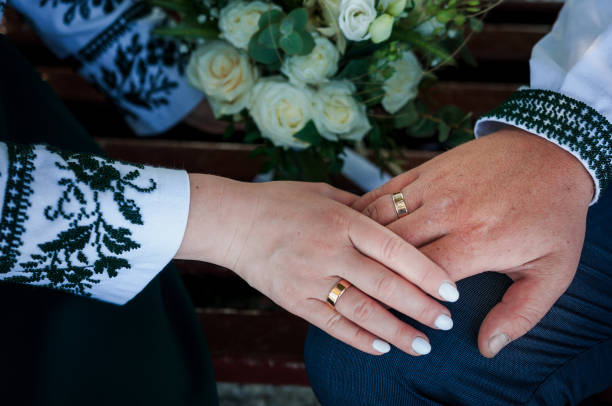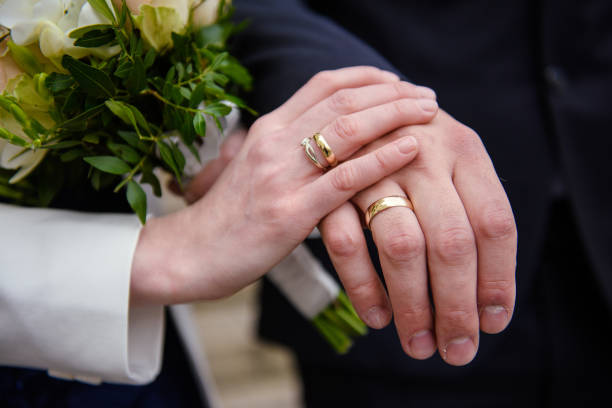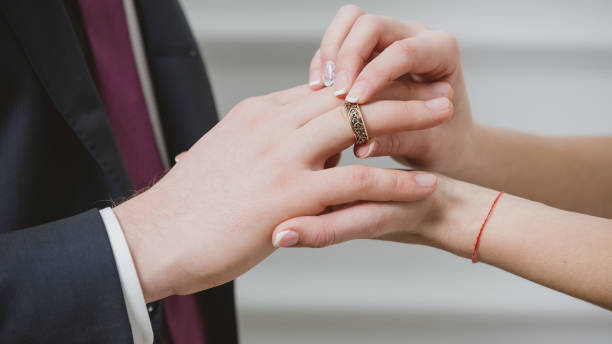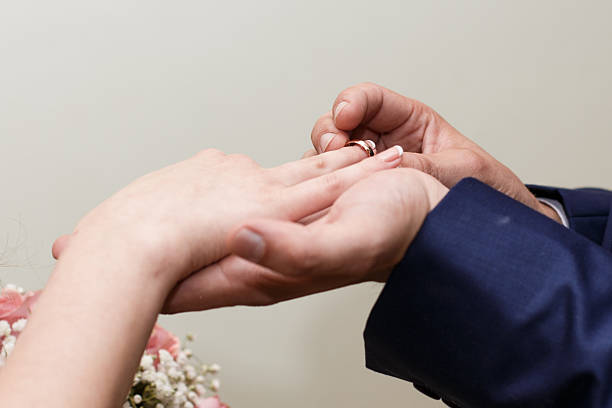Why do europeans wear wedding ring on right hand
Cultural Significance and Origins
Historically, the custom of wearing wedding rings on the right hand is traced back to ancient times and has evolved across various cultures. For many Eastern European nations, such as Russia, Poland, and Greece, this tradition is linked to religious beliefs and the ancient practice of having the right hand as the one were as vows were exchanged during the wedding ceremony.
- Historical Roots of the Tradition: The history of wedding rings can be traced back to ancient Egypt, where rings were as circular symbols of eternity. However, it was the Romans who popularized the practice of wearing the wedding band on the right hand, a custom that has been preserved in many parts of Europe. This right-hand convention could also be influenced by the Roman’s belief in the ‘vena amoris’ or ‘vein of love’ thought to run directly from the left hand to the heart, though modern anatomy does not support this notion.
- Variation Across Different European Cultures: While it is true that several European countries follow the right-hand ring tradition, others might observe different customs. For example, while in Germany and Norway wedding rings are found on the right hand, neighboring countries like the Netherlands and Ireland typically practice the left-hand tradition, similar to that of the UK and North America. This variation within Europe suggests that the choice of hand for wedding bands is influenced by deeply-rooted cultural traditions rather than a continental norm.

Symbolism of the Right Hand in Marriage
The right hand holds significance far beyond mere tradition in marriage ceremonies, imbued with symbolism that varies according to cultural and religious contexts.
- Religious Interpretations: Many European cultures have intertwined the symbolism of the right hand with religious meanings. In Christianity, the right hand is often associated with righteousness and virtue; thus, placing the wedding band on this hand reinforces the spiritual commitment being made. Moreover, some Orthodox Christian ceremonies involve the priest placing the ring on the right hand, thereby adding a sacred connotation to the practice.
- Societal Perceptions and Meanings: Beyond religion, the right hand has historically been considered the hand of authority and social significance—taking oaths, sealing deals, and making pledges were all actions performed with the right hand. To place a wedding ring on this same finger, therefore, reinforces the solemn and binding nature of the marital vow.
Right Hand vs. Left Hand – The Global Perspective
Across the globe, the hand on which a wedding band is worn tells a story of geographical, cultural, and personal differences.
- Reasons Behind the Differences: The distinction between right and left hands wearing the wedding rings often boils down to tradition and symbolism unique to each culture. While Western countries have largely adopted the left-hand placement due to a blend of cultural evolution and marketing—think of the prominence of the diamond engagement ring popularized by a timeless advertising campaign—other countries have remained steadfast in their right-hand custom.
- Influences on Wedding Ring Practices: Traditions can also adapt due to colonialism, globalisation, and cross-cultural exchanges. For example, as people migrate, they bring their wedding ring customs with them, sometimes merging or adapting them to fit into their new homes. As such, there can often be a mix of practices even within the same society, leading to a diverse expression of marital symbolism.

Practical Reasons Behind Right Hand Ring-Wearing
| Reason | Explanation |
|---|---|
| Historical Tradition | European countries have historically worn wedding rings on the right hand due to cultural and religious traditions. |
| Practicality | Wearing the wedding ring on the right hand may be more practical for left-handed individuals, as it reduces wear and tear on the ring. |
| Social Significance | In some cultures, wearing the wedding ring on the right hand signifies a married status, making it easier for others to identify married individuals. |
| Comfort | Some people find wearing the wedding ring on the right hand more comfortable, especially if they use their left hand more frequently. |
| Personal Preference | Ultimately, the decision to wear the wedding ring on the right hand may come down to personal preference and cultural norms. |
While the reasons behind choosing the right hand for wedding rings in parts of Europe are predominantly rooted in tradition and symbolism, there are also practical considerations that influence this choice. These range from occupational to personal comfort, taking into account the daily realities of wearing a significant piece of jewelry.
- Occupational Considerations: For many people, the choice of on which hand to wear their wedding ring may be influenced by their profession. For instance, those involved in manual labor or certain sports may find it more comfortable or safer to wear their ring on their right hand, particularly if they are left-handed. The risk of injury or damage to the ring can dictate on which hand the ring is worn. Moreover, certain professions that require sterile conditions, like medical fields, may require individuals to remove rings frequently, affecting their choice of hand based on convenience.
- Comfort and Convenience Factors: Personal comfort also plays a significant role in the decision. People may choose the right hand if they find it less interfering with daily activities, especially if they are predominantly left-handed. Furthermore, as some people age, they may experience changes in finger size due to arthritis or other conditions, which can necessitate shifting the ring to a different finger or hand that may be more comfortable.

Conclusion
In conclusion, the tradition of wearing wedding rings on the right hand in certain European countries is a rich tapestry woven from varied cultural, religious, and historical threads. These practices reflect a profound respect for the past, an adherence to societal norms, and a reflection of personal identity within the context of marriage. As cultural exchanges continue and the world becomes ever more interconnected, these traditions may evolve, but their significance remains a testament to the enduring power of marriage as a human institution. In essence, the hand on which a wedding ring is worn is much less important than the commitment it symbolizes—wedding bands, whether on right hands, left hands, or in any other form, are enduring emblems of love and partnership.
FAQ
- Why do some Europeans wear wedding rings on the right hand? In some European cultures, the right hand is historically and symbolically significant and is associated with oaths and vows, making it the traditional hand for wedding bands. Factors include religious traditions, cultural norms, and historical practices that have cemented this custom in certain countries.
- Is wearing wedding rings on the right hand exclusively a European practice? No, wearing wedding rings on the right hand is not exclusively European. Many other cultures around the world have similar practices based on their unique traditions and beliefs about marriage.
- Are there any practical reasons why someone might prefer to wear their wedding ring on their right hand? Yes, practical reasons might include occupational safety, ease of wear, and personal comfort—especially for those who are left-handed and may find wearing a ring on their non-dominant hand less intrusive for everyday tasks.
- Can the hand on which a wedding ring is worn change over time? Certainly, the hand on which a wedding ring is worn can change for a variety of reasons, such as changes in personal preference, professional requirements, or physical conditions like swelling or arthritis.
- Does wearing the wedding ring on a particular hand affect the meaning of the ring? The meaning of a wedding ring is not inherently affected by which hand it is worn on. The symbolism of a wedding ring lies in its representation of love, commitment, and the bond shared between partners, regardless of its placement.

